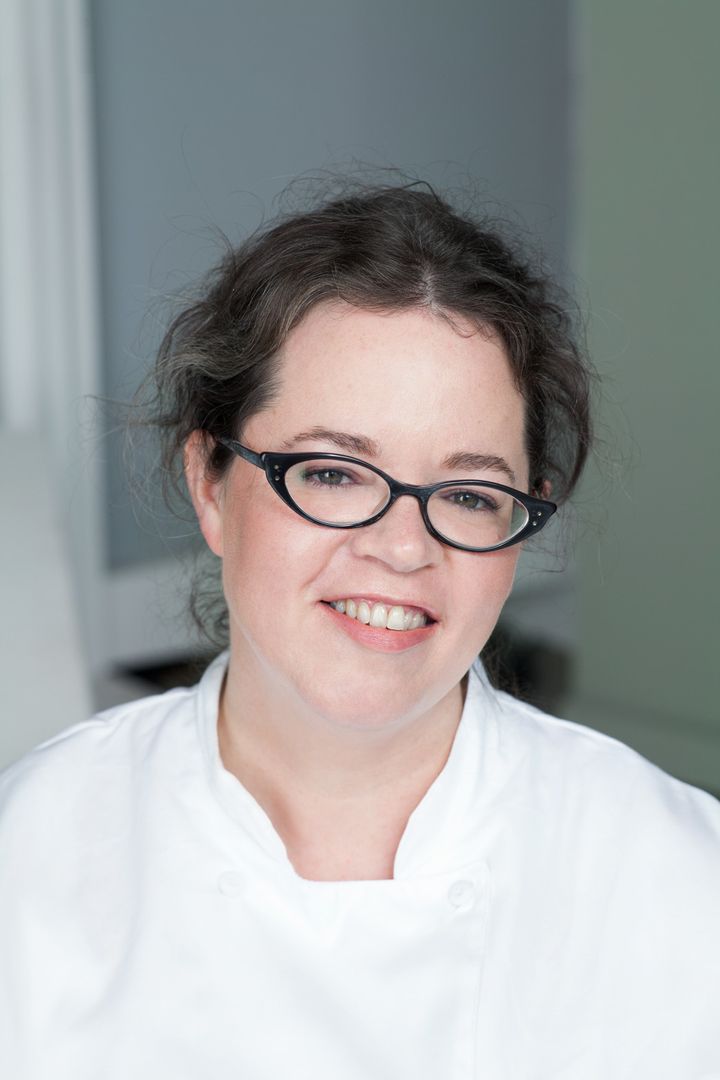
In The City Baker’s Guide to Country Living, Louise Miller paints a picture of a woman on the lam from some questionable decisions. When Olivia finds herself in rural Vermont baking apple pies to win over her boss and the local community, readers will find themselves won over by Miller’s beautiful descriptions and compelling characters.
Olivia surprises herself by escaping to Vermont—and loving it. How did you find her story? Do you ever fantasize about starting over in a new place? What did you enjoy the most about creating Olivia’s new home?
The City Baker’s Guide to Country Living was inspired by three things—an experience I had entering baking contest at a county fair, the voice of Olivia, my main character, and my own daydreams of living in Vermont. A dear friend of mine had moved to the Northeast Kingdom in the early 90’s, and I spent the better part of my twenties traveling north to visit her. I had fallen deeply in love with Vermont, and felt the pull to move there, but never took the leap. Writing The City Baker’s Guide was a way for me to explore that daydream without uprooting my happy city life.
Creating the fictional town of Guthrie, Vermont was one of the greatest joys of writing The City Baker’s Guide to Country Living. I had always wanted to create a whole fictional community—one that I could feel humming in the background wherever my characters went. Even when I was in the middle of writing a scene that took place at The Sugar Maple Inn, I felt like I still knew who was shopping at the White Market, and I could picture the waitresses changing shifts at the diner. Some of my greatest fictional loves have been towns. It was wonderful to create my own little utopia.
A big part of the story is the importance of family. Why did you select this as a theme? What do you hope the novel says about family?
At the beginning of the novel, Livvy is without any family to call her own, and has been on her own for as many years as she lived with her dad. The whole idea of family is foreign to her. She sees herself as someone who doesn’t belong anywhere, and for years she has been making decisions in her life (in the form of relationships and jobs) that reinforced that idea. The City Baker’s Guide is Livvy’s late coming-of-age story. It’s about her discovery that she could belong—to a person, to a place, to a community, and to a family.
I didn’t consciously choose the theme when I set out to write the novel. Livvy came to me pretty whole, and it was fun to untangle her issues and to see how she responded to the world of Guthrie. I do hope that the novel leaves readers with a sense that family is greater than the people we are related to by blood. And that it is okay for us to need each other.

What do writing and baking share?
Writing and baking are both creative processes, and when writing projects and baking projects are finished they bring people pleasure. But what I really appreciate is how they are different. Baking is physical work, which balances out the hours I spend sitting at a desk in front of my laptop. The best thing about baking is it’s wonderfully immediate. Within an hour or two of effort you can have a finished product to share with someone. Writing a novel takes a little longer.
Aside from apple pie, do you have any of the delicious recipes from the novel to share?
Yes! Here is the recipe for the chocolate almond macaroons that Livvy bakes for the library fundraiser during the Harvest festival.
Livvy’s Famous Chocolate-Almond Macaroons
1 dozen 2-inch cookies
8 ounces almond paste
⅔ cup sugar
¼ cup cocoa powder (extra dark if you can find it)
1 egg white
½ teaspoon instant espresso powder (instant coffee will do in a pinch)
1 teaspoon pure vanilla extract
1 tablespoon dark rum
¼ cup sliced, blanched almonds (optional, but pretty)
1. Preheat the oven to 325°F. Line a cookie sheet with parchment paper or a silicone liner.
2. Mix together the almond paste and sugar. Again, there are a couple ways to go about this. The basic idea is that you want to integrate the almond paste and the sugar until the paste is very fine. I do this in the bowl of a stand mixer, using the paddle attachment, but you can do it in a food processor fitted with the blade or in a bowl using your fingertips (but this takes forever). The mixture will look a little like wet sand when it’s ready.
3. Add the cocoa powder and mix until it is fully incorporated. There is no gluten in this recipe, so you don’t have to worry too much about overmixing.
4. In a separate bowl, whisk together the egg white, espresso powder, vanilla, and rum. Pour this into the almond paste mixture and stir until it is well mixed. The dough will be sticky and slightly stiff.
5. Scoop the dough into balls and place on the cookie sheet, about 2 inches apart. I make mine about the size of a heaping tablespoon, but you can make them smaller. Dot the top of each cookie with a sliced almond, if you like.
6. Bake for about 30 minutes. The timing will take a little trial and error, based on your oven, how big you scoop the cookies, and the weather. It can be tricky because you can’t go by color. The outsides should look dry, and the almonds should look light golden brown.
7. The key to macaroons is that they really need to cool on the pan for about 30 minutes after baking. If you try to remove them too quickly, the bottoms will stick and the insides will stick to the bottoms, leaving you with a sad, empty macaroon shell. Be patient!
